What Are Ransomware Protection Services?
Ransomware protection services are comprehensive solutions to defend systems against ransomware attacks. These services typically involve a combination of preventive, detective, responsive, and recovery mechanisms specially engineered to defend against the complex threat landscape presented by ransomware.
Organizations use these services to mitigate the risks posed by ransomware, which can cause significant financial and operational damage if systems become compromised. By implementing a thorough strategy, organizations can lower the probability of a successful attack and minimize potential damage.
The primary objective of these services is to maintain the integrity, confidentiality, and availability of an organization’s data. With ransomware attacks becoming more sophisticated, protection services use advanced threat intelligence, machine learning, and real-time analysis to offer dynamic defense systems.
In this article:
- Types of Ransomware Protection Services
- Notable Ransomware Protection Services Focused on Disaster Recovery
- Notable Ransomware Protection Services Focused on Detection and Response
Types of Ransomware Protection Services
There are two main types of ransomware protection services:
Disaster Recovery Solutions
Recovery solutions focus on restoring data and systems post-attack. By maintaining regular, secure backups, organizations can restore systems to their original state without succumbing to ransom demands. It is crucial that backups are stored separately from the main network to prevent them from being compromised during an attack.
In addition to backups, employing data recovery tools and techniques helps recover files encrypted by ransomware. These tools can break encryption or reverse engineering workarounds to return systems to normal operation. An effective recovery plan ensures business continuity and can prevent long-term damage following a ransomware incident.
Detection and Response Solutions
Detection mechanisms identify ransomware attacks once they have breached initial defenses. Advanced detection systems use behavioral analysis to monitor for anomalies indicative of ransomware activity, such as unusual file encryption processes or spikes in data exfiltration. Real-time monitoring tools aid in detecting threats as they develop.
By analyzing incoming and outgoing network traffic, these services can identify patterns or signatures associated with known ransomware strains. Alongside automated systems, human oversight remains important, with security teams regularly reviewing alerts and investigating potential threats.
Incident response strategies often involve external ransomware protection services deploying rapid containment measures once an attack is detected. These services can isolate affected systems from the rest of the network to prevent further spread, and immediately disable compromised user accounts or services. Quick action limits the damage and gives security teams time to assess the extent of the breach.
After containment, external providers assist with forensic analysis to determine how the ransomware entered and what vulnerabilities were exploited. They also help coordinate recovery efforts, including system restoration from clean backups and the removal of malware remnants. Some services offer negotiation support if an organization considers paying the ransom, although recovery without payment is strongly prioritized.
Related content: Read our guide to ransomware backup
Notable Ransomware Protection Services Focused on Disaster Recovery
1. N2W
N2W is a cloud-native backup and disaster recovery solution built specifically for AWS and Azure, with expanding support for Multicloud environments. Designed for high-performance, large-scale cloud operations, N2W enables enterprises to rapidly protect, replicate, and restore their cloud workloads with minimal RTO and RPO.
Key features include:
- Cross-cloud disaster recovery: Seamlessly replicate and immediately restore workloads across AWS and Azure regions, accounts/subscriptions, or even to and from Wasabi, ensuring business continuity even in the event of regional outages or account compromise.
- Rapid Full Environmental and Granular recovery flexibility: Rapidly restore full environments, individual VMs (EC2 instances), or even single files—within minutes—supporting a range of recovery needs from critical outages to simple human error.
- Configuration-aware backups: Capture and restore not only data but also critical configuration, network, and security settings—so recoveries are fast, accurate, and production-ready.
- Cost-optimized archival tiering: Automatically move older backups to low-cost storage tiers like S3 Glacier, ensuring long-term retention stays budget-friendly without sacrificing compliance or access.
- Immutability and ransomware resilience: Backup copies can be isolated and protected against accidental deletion or ransomware attacks, with immutable, air-gapped options and IAM-aware recovery workflows.
- Automated orchestration and failover: Schedule regular, automated disaster recovery drills complete with resource prioritization and comprehensive reporting.
Related content: read our guide to ransomware protection for enterprise
2. Nasuni Ransomware Protection

Nasuni Ransomware Protection is an edge-focused solution to detect, respond to, and recover from ransomware attacks. Built into the Nasuni File Data Platform, it delivers real-time detection, immutable storage, and rapid recovery capabilities that support large-scale enterprise environments.
Key features include:
- Edge detection: Monitors file activity at the edge using known threat signatures and behavioral analytics to identify ransomware.
- Incident reporting: Automatically generates incident reports, aiding compliance, insurance claims, and response planning.
- Recovery process: Recovers millions of files by surgically restoring only the affected data to clean, previous versions.
- Immutable snapshots: Maintains immutable file snapshots to ensure data can’t be altered or deleted by attackers.
- Restore capabilities: Restores individual files, folders, or entire volumes to reduce downtime and data loss.
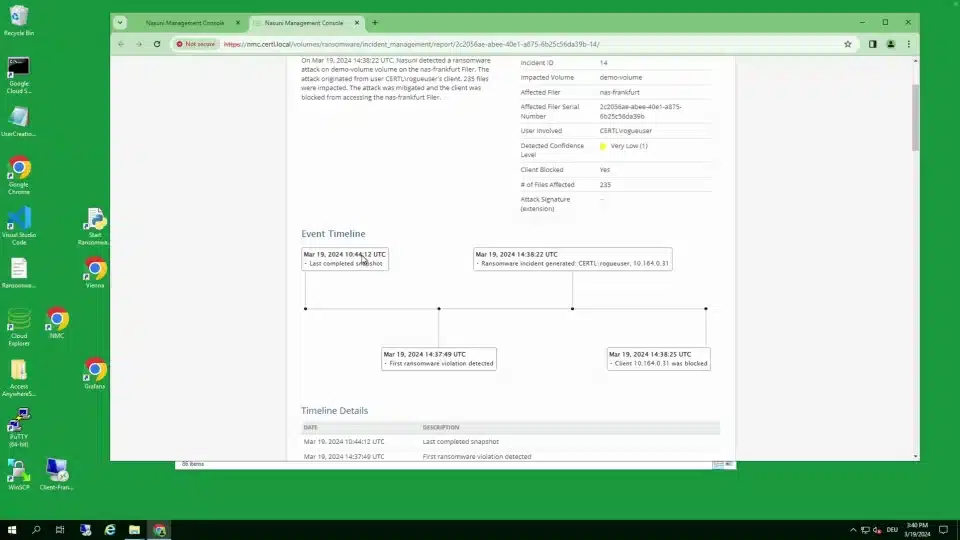
Source: Nasuni
3. Zerto

Zerto is a disaster recovery and ransomware resilience platform that helps organizations detect and recover from cyberattacks. Its main focus is enabling organizations to rapidly return to a healthy operational state following disruptions like ransomware, with minimal downtime and data loss.
Key features include:
- Continuous data protection (CDP): Replication and journaling detect changes in real time.
- Ransomware detection: Detects encryption events, triggering alerts and tagging journal checkpoints for quick recovery.
- Rapid recovery: Restores applications and data to a state before corruption occurred.
- Crash-consistent multi-VM recovery: Recovers complex applications with multiple virtual machines as a single unit.
- Automated orchestration and failover: Helps simplify disaster recovery with automation for testing and failover.
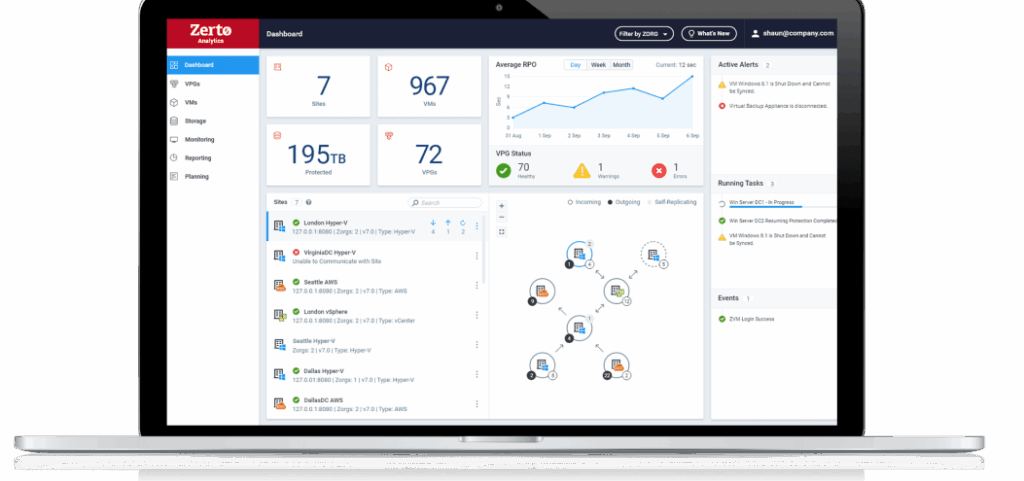
Source: Zerto
4. Acronis

Acronis is a cyber protection platform that combines data backup, disaster recovery, and endpoint security to provide ransomware defense. It offers proactive, active, and reactive protection measures that identify, prevent, and neutralize ransomware threats.
Key features include:
- Multi-layered ransomware protection: Combines prevention, detection, and response tools—including AI-assisted threat detection—to block ransomware threats.
- Automated backups and rollbacks: Performs continuous file and full-image backups with automated rollback options to recover from encrypted or corrupted states.
- Integrated cyber protection: Merges endpoint security and data protection into a single solution.
- Threat intelligence: Improves defense mechanisms with updated threat data to detect and respond to the latest attack vectors.
- Recovery capabilities: Supports rapid recovery across endpoints and systems to ensure business continuity.
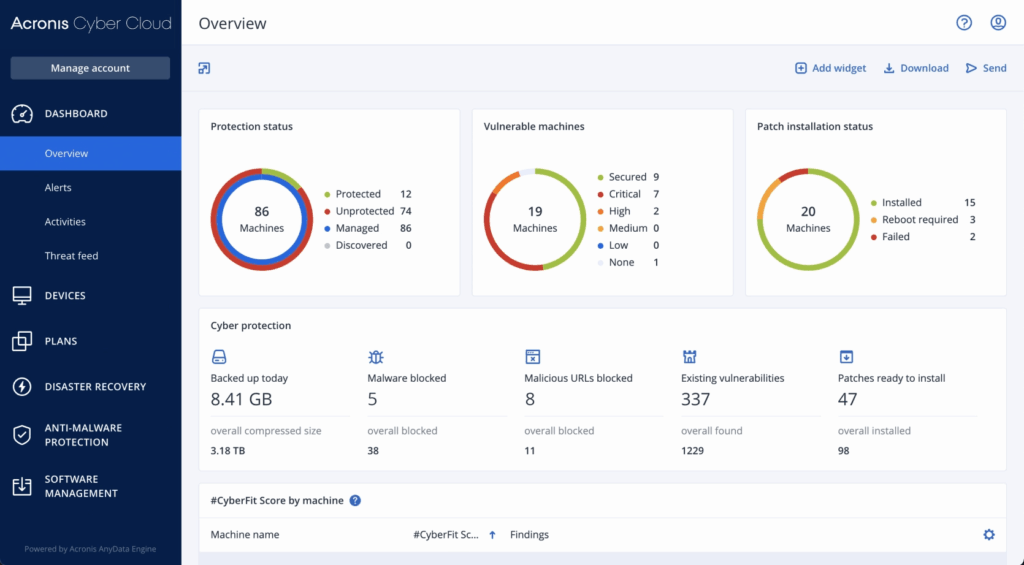
Source: Acronis
5. Arcserve

Arcserve is a unified data protection platform that combines backup, disaster recovery, and ransomware defense in an integrated solution. It delivers a security framework to prevent, detect, and neutralize threats while keeping data immutable and readily recoverable.
Key features include:
- Ransomware protection: Uses a multi-layered defense strategy to prevent and immunize backup data from ransomware and cyberattacks.
- Immutable backup storage: Ensures backup data cannot be altered or deleted by malicious software, supporting both on-premises and cloud storage.
- Integrated cybersecurity with Sophos: Includes Sophos Intercept X Advanced, offering deep learning malware detection, CryptoGuard anti-ransomware, and WipeGuard for boot-record protection.
- Threat detection: Uses signatureless detection and behavioral analytics to identify both known and unknown threats.
- Unified backup and disaster recovery: Consolidates protection for physical, virtual, cloud, and SaaS environments.

Source: Arcserve
Notable Ransomware Protection Services Focused on Detection and Response
6. Malwarebytes OneView
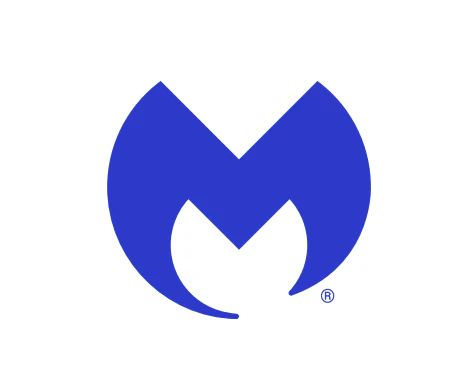
Malwarebytes OneView is a centralized security management platform for IT service providers to simplify the delivery of endpoint protection across multiple clients. It offers ransomware rollback capabilities, allowing recovery of files and systems affected by attacks without relying on external backups.
Key features include:
- Ransomware rollback: Restores systems to their pre-attack state using rollback technology, reducing downtime and avoiding ransom payments.
- Customizable protection settings: Configures security policies based on client environments.
- Centralized monitoring and alerts: Offers dashboards, reports, and real-time notifications to track client security postures and respond quickly to threats.
- Single lightweight agent: Deploys a unified agent to handle ransomware, malware, breaches, and vulnerabilities.
- Simplified billing and reporting: Offers detailed usage, audit logs, and billing history at the site level to simplify client invoicing and management.

Source: Malwarebytes
7. Check Point Harmony Endpoint

Check Point Harmony Endpoint is a unified endpoint security solution to protect remote and hybrid workforces from cyber threats such as ransomware, phishing, and zero-day malware. Built on Check Point’s ThreatCloud AI, it uses intelligence from over 60 AI engines to block attacks across various vectors.
Key features include:
- Ransomware and malware protection: Detects and blocks ransomware based on behavioral analysis, restores encrypted files via automated snapshots, and includes processor-level protection through Intel TDT.
- Zero-day and phishing defense: Phishing protection with browser security tools like URL filtering, credential reuse detection, and heuristic analysis of suspicious web elements.
- Threat intelligence and forensics: Backed by ThreatCloud AI for real-time threat detection. Provides forensic reports and MITRE ATT&CK mapping for attack analysis.
- Data protection and GenAi security: Full disk encryption, removable media encryption, DLP tools, and GenAI security features to detect and prevent sensitive data loss across endpoints.
- Endpoint detection and response (EDR/XDR): Automated incident reporting, threat hunting, and sandboxing for investigation and blocking of unknown malware.

Source: Check Point
8. CyberProof Ransomware Protection

CyberProof Ransomware Protection is a managed security service to help organizations defend against sophisticated ransomware attacks through proactive measures and expert-led response. The service combines threat intelligence, virtual analyst technology, and a skilled cybersecurity team to deliver continuous monitoring, early detection, and rapid mitigation.
Key features include:
- Managed ransomware defense: End-to-end service covering assessment, solution implementation, and ongoing management of ransomware protection.
- Threat intelligence: Utilizes real-time intelligence to anticipate and neutralize ransomware tactics before they can cause harm.
- Incident response and recovery: Includes expert-led incident response, forensic investigation, and support for data recovery and business continuity.
- Backup and disaster recovery planning: Ensures data availability and minimizes downtime through tailored continuity strategies.
- Regulatory compliance support: Helps organizations align with global data protection standards, reducing risk of fines and legal issues.
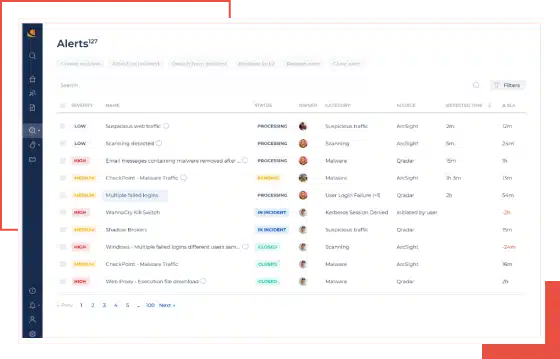
Source: CyberProof
9. Sophos Endpoint
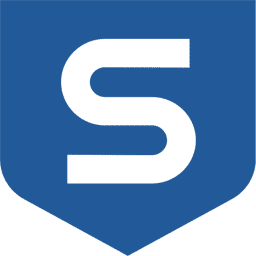
Sophos Endpoint is an AI-driven endpoint protection platform built to stop modern cyber threats before they can disrupt business operations. Based on Intercept X, it combines deep learning, behavioral analysis, and exploit prevention to deliver a prevention-first security strategy.
Key features include:
- AI-powered threat prevention: Multiple deep learning models block known and unknown threats without relying on signature-based detection.
- CryptoGuard ransomware protection: Detects and stops malicious file encryption and automatically rolls back impacted files to their safe state.
- Remote ransomware defense: Blocks attacks launched from unmanaged or compromised devices within the same network.
- Anti-exploit technology: Includes preconfigured exploit mitigations to stop fileless and zero-day attacks that bypass traditional defenses.
- Behavioral and web controls: Reduces attack surface with integrated controls for applications, websites, and connected peripherals.

Source: Sophos
10. CrowdStrike Falcon
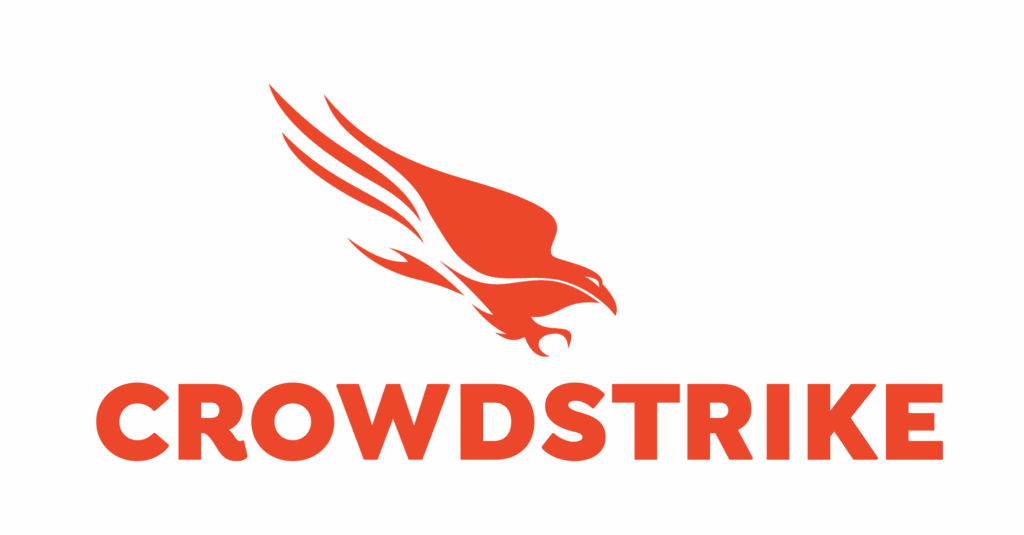
CrowdStrike Falcon is an AI-native cybersecurity platform to deliver proactive and adaptive protection against modern ransomware threats. It replaces traditional endpoint solutions with real-time, intelligence-driven defense supported by threat hunting and behavioral analysis.
Key features include:
- AI-native ransomware protection: Uses machine learning and behavioral analytics to detect and block ransomware without relying on signatures.
- Adversary intelligence: Built on real-world insights from active threat actors.
- Adversary OverWatch threat hunting: A managed hunting team that identifies and stops stealthy, human-led attacks before ransomware can deploy.
- Hands-on exercises: Includes tabletop, red team/blue team, and adversary emulation exercises to test and improve ransomware response readiness.
- Endpoint visibility: Delivers detection coverage and analytic visibility across the environment.
Source: CrowdStrike
How to Choose Ransomware Protection Services
Selecting the right ransomware protection service involves more than comparing product features. Organizations must align solutions with their threat landscape, operational needs, and recovery objectives. Here are key considerations when assessing ransomware protection services:
- Threat coverage: Ensure the solution defends against a broad spectrum of ransomware types, including fileless attacks, zero-day exploits, and advanced persistent threats. It should detect both known malware and novel attack patterns using behavioral analytics.
- Detection and response capabilities: Look for services offering real-time monitoring, automated threat response, and 24/7 security team support. Features like rollback, quarantine, and forensic analysis are critical for containing and mitigating active attacks.
- Recovery and resilience: Evaluate the service’s backup and recovery mechanisms. Look for immutable storage, offline backups, and fast restore options that can bring systems back online with minimal data loss and downtime.
- Integration with existing infrastructure: Choose solutions that can integrate with the existing security stack, including SIEM tools, identity management systems, and endpoint agents. API support and flexible deployment options (cloud, on-prem, or hybrid) are essential.
- Scalability and management: Consider how well the service can scale with the organization’s size and complexity. Centralized management consoles, automation capabilities, and multi-tenant support are valuable for simplified administration.
- Compliance and reporting: Verify whether the solution supports compliance with relevant regulations (e.g., GDPR, HIPAA) through audit logs, incident reporting, and data handling features.
- Vendor expertise and support: Assess the vendor’s experience in dealing with ransomware threats. Managed services, threat hunting capabilities, and access to expert guidance can significantly improve response readiness.
Cost and licensing model: Evaluate the total cost of ownership, including subscription fees, deployment costs, and support services. Transparent pricing and flexible licensing can help manage security within budget constraints.
Learn more about N2W’s Ransomware features to keep your data safe and always recoverable.